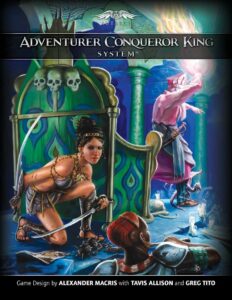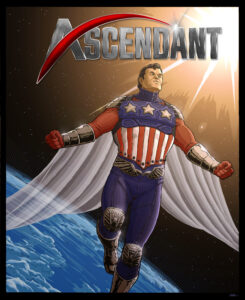Latest Releases
Our Games
Experience the cutting edge of campaign play with the Adventurer Conqueror King System – combining the ease of play of the original fantasy role-playing game with the consistency of world building enabled via a robust and balanced economic system. ACKS includes resources for domain play, class and spell building, and several add-on rulesets that enhance and expand options available to players and referees.
Ascendant is the superhero role playing game of infinite possiblities! Elegant mechanics for simulating the physics of comic-book worlds, grounded in real-life benchmarks, allow play of heroes at any power level – from streetfighters to cosmic powers. Comprehensive investigation and invention mechanics support both super-detectives and super-geniuses, and extensive rules for handling disasters from disease outbreaks to hostage negotiations through tornadoes and volcanoes round out the gamut of superheroic adventures.


